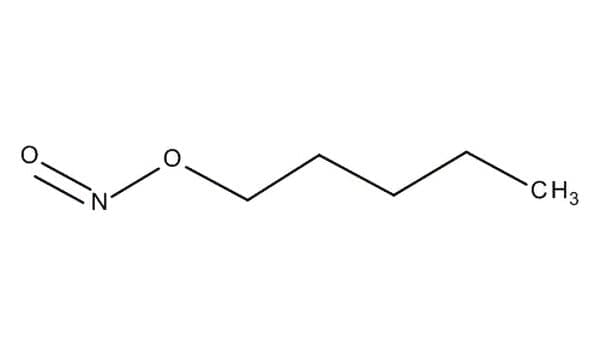
Amyl nitrosum
Latin name: Amyl nitrosum
Short name: Amyl-n
Common name: Amyl Nitrite | Nitrite of Amyl | Isoamyl Nitrite | Pentyl Nitrite
Primary miasm: Sycotic Secondary miasm(s): Psoric
Kingdom: Minerals
Family: Chemical compound: Organic Nitrite Ester.
- Symptomatology
- Remedy Information
- Differentiation & Application
Amyl nitrosum is an organic nitrite ester derived from amyl alcohol (C₅H₁₁OH) and nitrous acid (HNO₂). It is a volatile liquid, pale yellow, with a fruity odour, known for its rapid physiological action on the vascular system. It is highly volatile at room temperature and acts swiftly when inhaled, producing a sudden vasodilatory effect.
Used in conventional medicine as a vasodilator for the treatment of angina pectoris; in emergency settings for cyanide poisoning; and historically as a diagnostic tool for heart murmurs by inducing transient vasodilation. Recreational inhalation (“poppers”) has been noted for producing a brief euphoric rush and muscle relaxation.
First introduced by Dr. Benjamin W. Richardson (London, 1859) in conventional medicine, with homeopathic proving symptoms documented later by Dr. J. C. Burnett, Dr. Hughes, and others through clinical observation, accidental overdoses, and physiological experiments.
- Vascular system – intense vasodilation, flushing, congestion, sudden engorgement.
- Heart and circulation – palpitation, rapid pulse, sudden flushing of face and neck.
- Nervous system – sudden rushes of blood to head, faintness, dizziness.
- Respiratory system – oppression of breathing during flushes.
- Face and skin – sudden heat, redness, perspiration, prickling.
- Head – congestive headaches, throbbing temples.
- Open, cool air (relieves congestion and oppression).
- Rest in recumbent position during faintness.
- Loosening tight clothing during flush.
- Application of cold to head and neck in congestive attacks.
- Warm, close rooms (brings on flushing and oppression).
- Emotional excitement or embarrassment (provokes rush of blood).
- Physical exertion (precipitates palpitations and flushing).
- Inhalation of vapour (immediate aggravation of all symptoms).
- Glonoine – Both produce sudden rushes to head with flushing; Glonoine has more aggravation from sun heat and a sense of head expansion; Amyl-n. acts faster and shorter.
- Lachesis – Hot flushes with choking and need to loosen clothing; but Lachesis symptoms are worse after sleep and more left-sided.
- Sanguinaria – Climacteric flushes, but more associated with burning in palms and soles.
- Complementary: Sanguinaria, Lachesis.
- Antidotes: Cold air, inhalation of ammonia vapour.
- Inimical: Not well recorded.
The essence of Amyl nitrosum lies in suddenness, intensity, and transience. The patient experiences an abrupt vascular storm—heat, redness, throbbing, oppression—that comes swiftly and passes quickly, leaving exhaustion or pallor. It resonates with acute circulatory crises, menopausal flushes, and conditions where rapid vasodilation offers relief. Energetically, it represents the uncontrolled surge of vital force to the surface, threatening collapse if not balanced.
Extremely valuable in acute climacteric flushes, angina pectoris with vascular spasm, and palliation of cyanide poisoning. Acts best in high attenuation for functional disorders, but inhalation of crude vapour is used in emergencies. Duration of action is brief, requiring repetition if indicated.
Mind
- Flushing, with anxiety.
- Fear of suffocation during flushes.
- Restlessness during heat.
Head
- Congestion, sudden.
- Pulsation in temples.
- Headache, bursting, with flushing.
Eyes
- Redness during congestion.
- Flickering before eyes with rush of blood.
- Vision dim during flushes.
Stomach
- Nausea during congestion.
- Warmth rising from epigastrium.
Skin
- Flushed, hot, perspiring.
- Prickling during heat.
Extremities
- Heat in hands during flushes.
- Trembling with palpitations.
Generalities
- Flushes, sudden, intense.
- Short action, rapid onset.
Richardson, B. W. – First physiological description of rapid vasodilation and pulse acceleration.
Hering, C. – Noted mental anxiety during rushes and the intense facial heat.
Hughes, R. – Detailed congestive headache description and circulatory effects.
Clarke, J. H. – Observations on menopausal flushes, throat constriction, and clinical applications.
Burnett, J. C. – Reports on rapid palliation of dysmenorrhoea and angina episodes.
